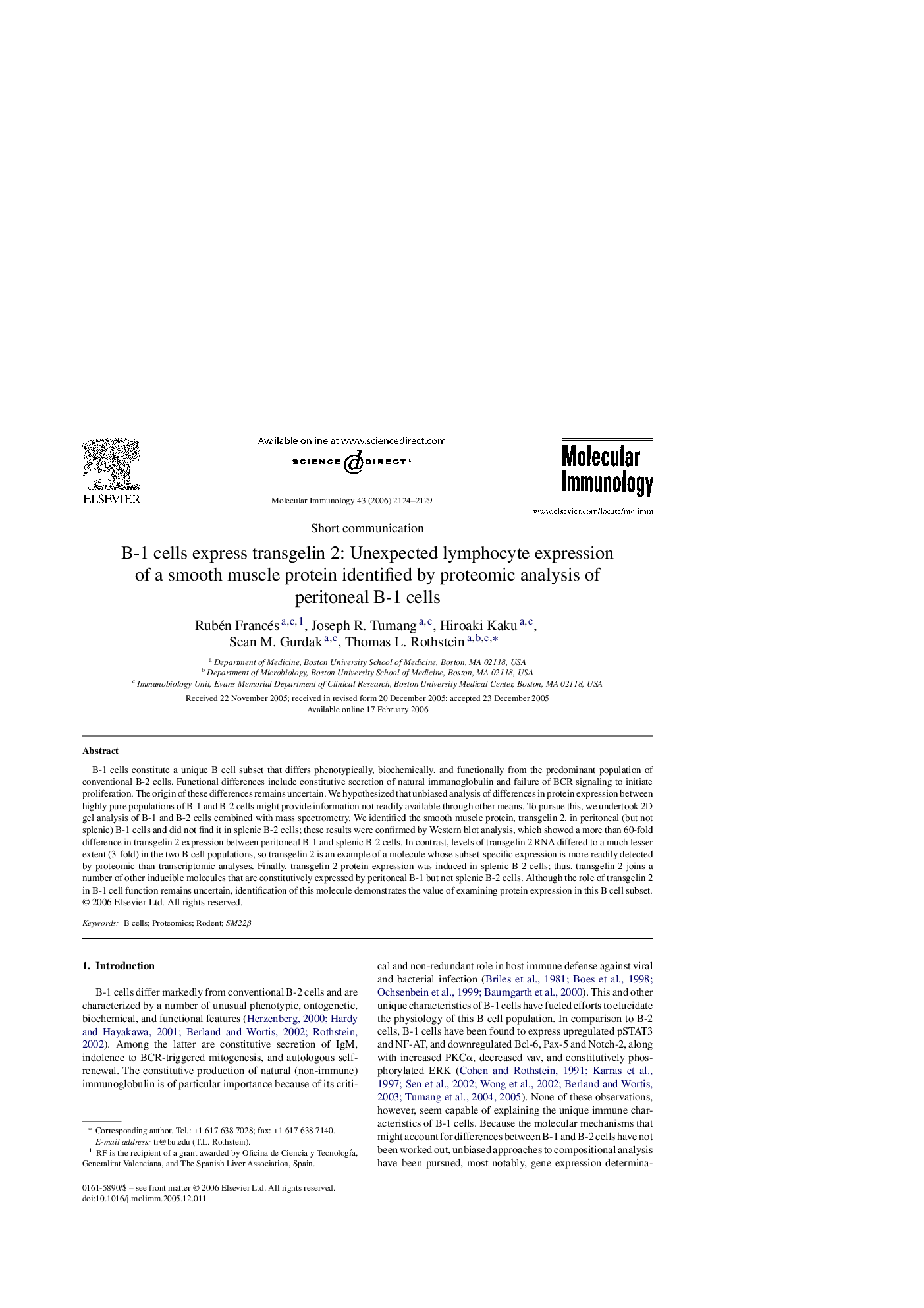| Article ID | Journal | Published Year | Pages | File Type |
|---|---|---|---|---|
| 2832784 | Molecular Immunology | 2006 | 6 Pages |
B-1 cells constitute a unique B cell subset that differs phenotypically, biochemically, and functionally from the predominant population of conventional B-2 cells. Functional differences include constitutive secretion of natural immunoglobulin and failure of BCR signaling to initiate proliferation. The origin of these differences remains uncertain. We hypothesized that unbiased analysis of differences in protein expression between highly pure populations of B-1 and B-2 cells might provide information not readily available through other means. To pursue this, we undertook 2D gel analysis of B-1 and B-2 cells combined with mass spectrometry. We identified the smooth muscle protein, transgelin 2, in peritoneal (but not splenic) B-1 cells and did not find it in splenic B-2 cells; these results were confirmed by Western blot analysis, which showed a more than 60-fold difference in transgelin 2 expression between peritoneal B-1 and splenic B-2 cells. In contrast, levels of transgelin 2 RNA differed to a much lesser extent (3-fold) in the two B cell populations, so transgelin 2 is an example of a molecule whose subset-specific expression is more readily detected by proteomic than transcriptomic analyses. Finally, transgelin 2 protein expression was induced in splenic B-2 cells; thus, transgelin 2 joins a number of other inducible molecules that are constitutively expressed by peritoneal B-1 but not splenic B-2 cells. Although the role of transgelin 2 in B-1 cell function remains uncertain, identification of this molecule demonstrates the value of examining protein expression in this B cell subset.
